| Corcoran Technical Trading Patterns For January 20 |
| By Clive Corcoran |
Published
01/20/2009
|
Stocks
|
Unrated
|
|
|
|
Corcoran Technical Trading Patterns For January 20
A 30-minute chart for QQQQ reveals two previous instance of where MACD divergences both negative and positive gave good clues as to price inflection points.
At present there is no clear guidance from the current relative slopes of price and momentum. I see this as a good environment for day traders but not easy to call for position traders.
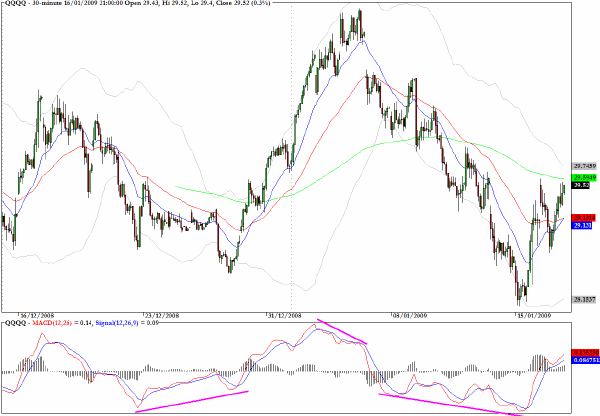
Sterling is plummeting against the US dollar as this is being written and now is in the $1.30's with a five-cent drop since yesterday. It has the potential to go a lot lower based upon the increasingly difficult position that the UK finds itself in with respect to many banks that are basically insolvent, a ballooning public deficit and a currency that, even in the best of times, needs to be somewhat propped up by relatively high interest rates, which, in the current circumstances, are no longer obtainable.
The following excerpt from an article which I wrote yesterday gives some further thoughts on the UK's predicament.
The UK government is implementing round two of its multi-billion pound “Save the banks” rescue package. Details are still emerging but the key provision is that the UK government, courtesy of the always reliable taxpayers, will insure or back stop all of those nasty assets that the banks have on their balance sheets.
Asked on a popular and influential radio program Monday morning, the Chancellor of the Exchequer was repeatedly asked to provide a figure as to how much this insurance or dodgy asset underwriting could be worth. He was unable to provide even a ball park figure for this.
The question arises as to whether he actually knows the number and it is just too awful to reveal or, whether he, along with the banks that are holding all of these assets, actually can put a value on them.
Effectively, through this blanket guarantee, the UK taxpayer has written a blank cheque to what remains of the private banking sector in the UK.
One does not have to subscribe to any conspiracy theory to believe that the government’s unwillingness to really confront the magnitude of the black hole is part of a carefully conceived plan to trickle out the bad news so that it will not really traumatize the markets again.
This view is supported by the fact that, after much deliberation, the government decided not to ring fence the so called toxic assets and separate the balance sheets of major banks into good bank/bad bank hybrids. Apart from the awkward fact that the public sector would get to own the bad banks and presumably private investors would continue to own the good banks, the avoidance of sticking all of the bad assets into the bad bank enables the government to remain mute on the size of the balance sheet of the bad bank.
It also may save Barclays from having to confess as to the extent of its exposure to structured instruments for which there is zero liquidity and no obvious way of valuation.
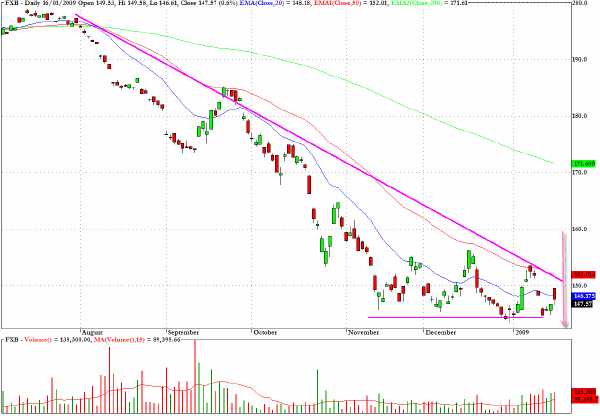
The currency markets are where much of the action is to be seen so far in Tuesday's trading, with the Euro falling below the psychologically significant $1.30 level. But as the chart reveals, a more important level was violated late last week.
It is not difficult to construct a bearish case from the fundamentals or even the technical characteristics and the exchange traded fund, FXE, could be worth considering on the short side for intermediate term position traders.
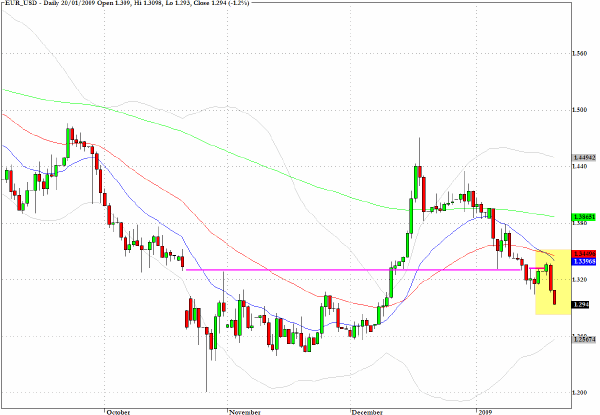
As discussed last week, the Dow Jones Transportation index (^DJT) is flirting with new multi-year lows and the sector fund IYT will be worth monitoring closely today for short-term trading cues.

Last Thursday I suggested that Northrop Grumman (NOC) reveals a tiny doji star in the context of a pullback pattern and may find support at the converged moving averages.
A long position established on Thursday would have rewarded nicely in trading last Friday.
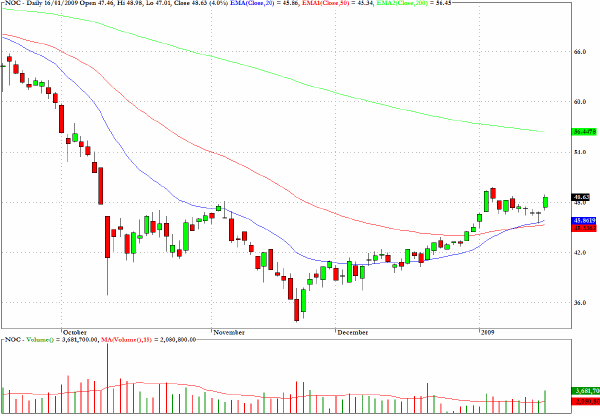
Similar reasoning to the above would also have applied to Cree (CREE) which was also discussed as a possible long candidate last Thursday.
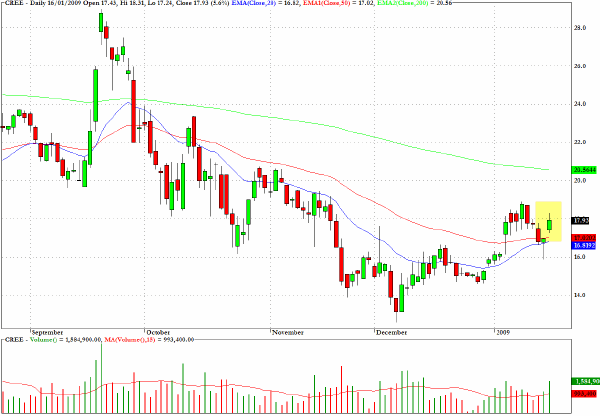
AmerisourceBergen (ABC) pierced above the 200-day EMA but the volume characteristics and the resistance level indicated on the chart would have me looking at a shorting opportunity in today's session.
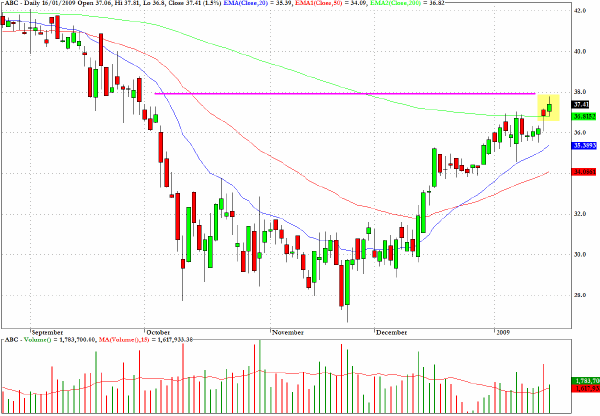
The recent strong rally in educational stocks has coincided with the Obama inauguration and today could see a "buy on the rumor sell on the news" development for Apollo.
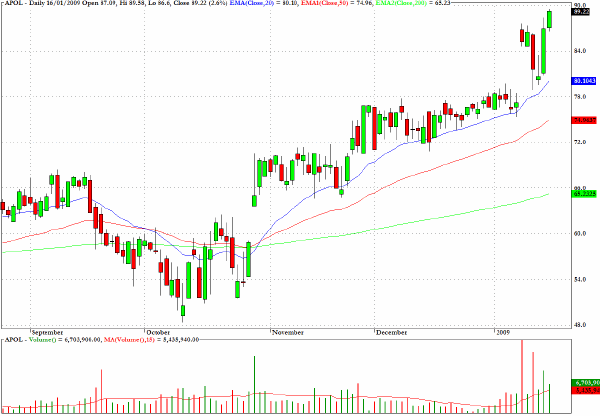
Clive Corcoran is the publisher of TradeWithForm.com, which provides daily analysis and commentary on the US stock market. He specializes in market neutral investing and and is currently working on a book about the benefits of trading with long/short strategies, which is scheduled for publication later this year.
Disclaimer
The purpose of this article is to offer you the chance to review the trading methodology, risk reduction strategies and portfolio construction techniques described at tradewithform.com. There is no guarantee that the trading strategies advocated will be profitable. Moreover, there is a risk that following these strategies will lead to loss of capital. Past results are no guarantee of future results. Trading stocks and CFD's can yield large rewards, but also has large potential risks. Trading with leverage can be especially risky. You should be fully aware of the risks of trading in the capital markets. You are strongly advised not to trade with capital.
|